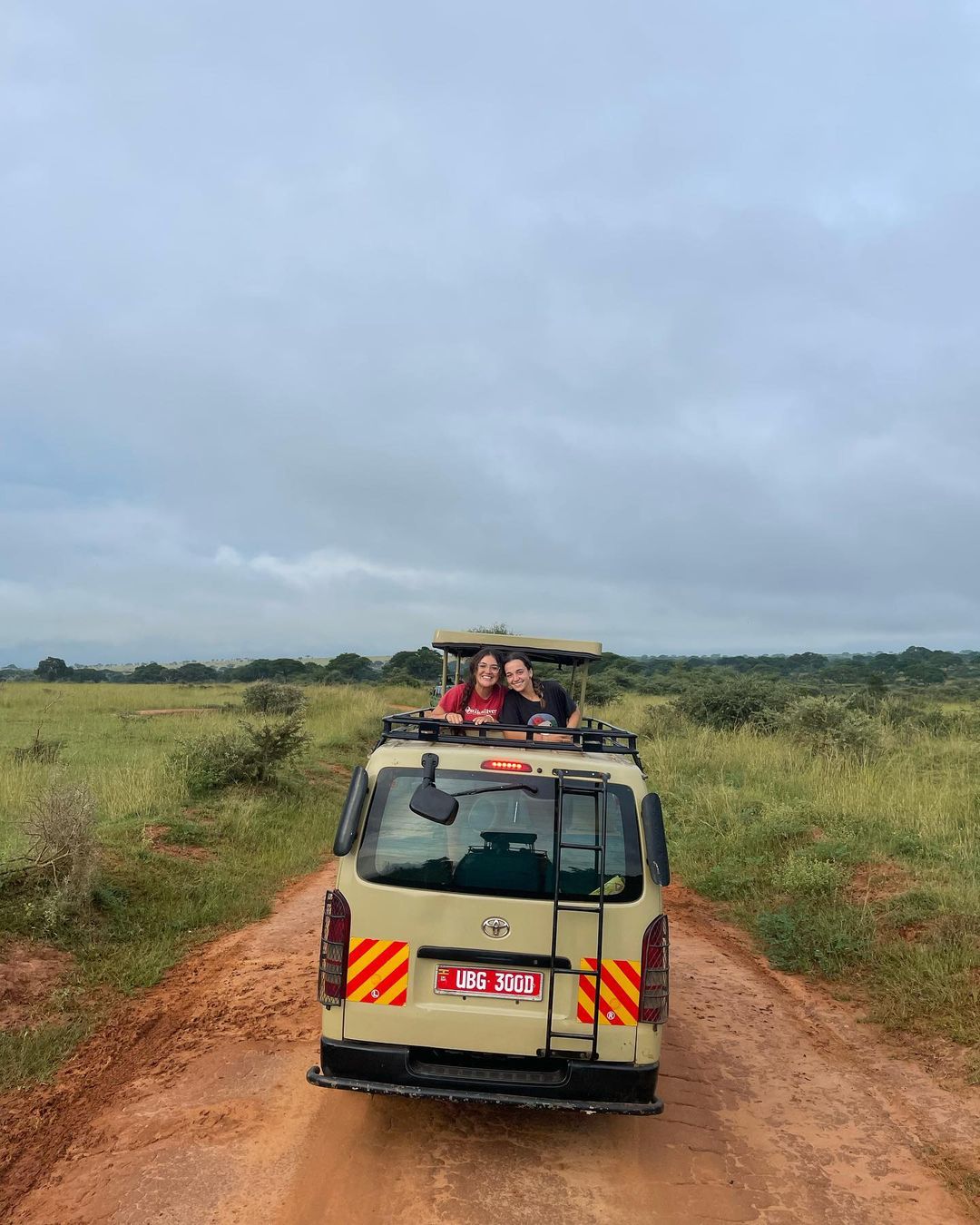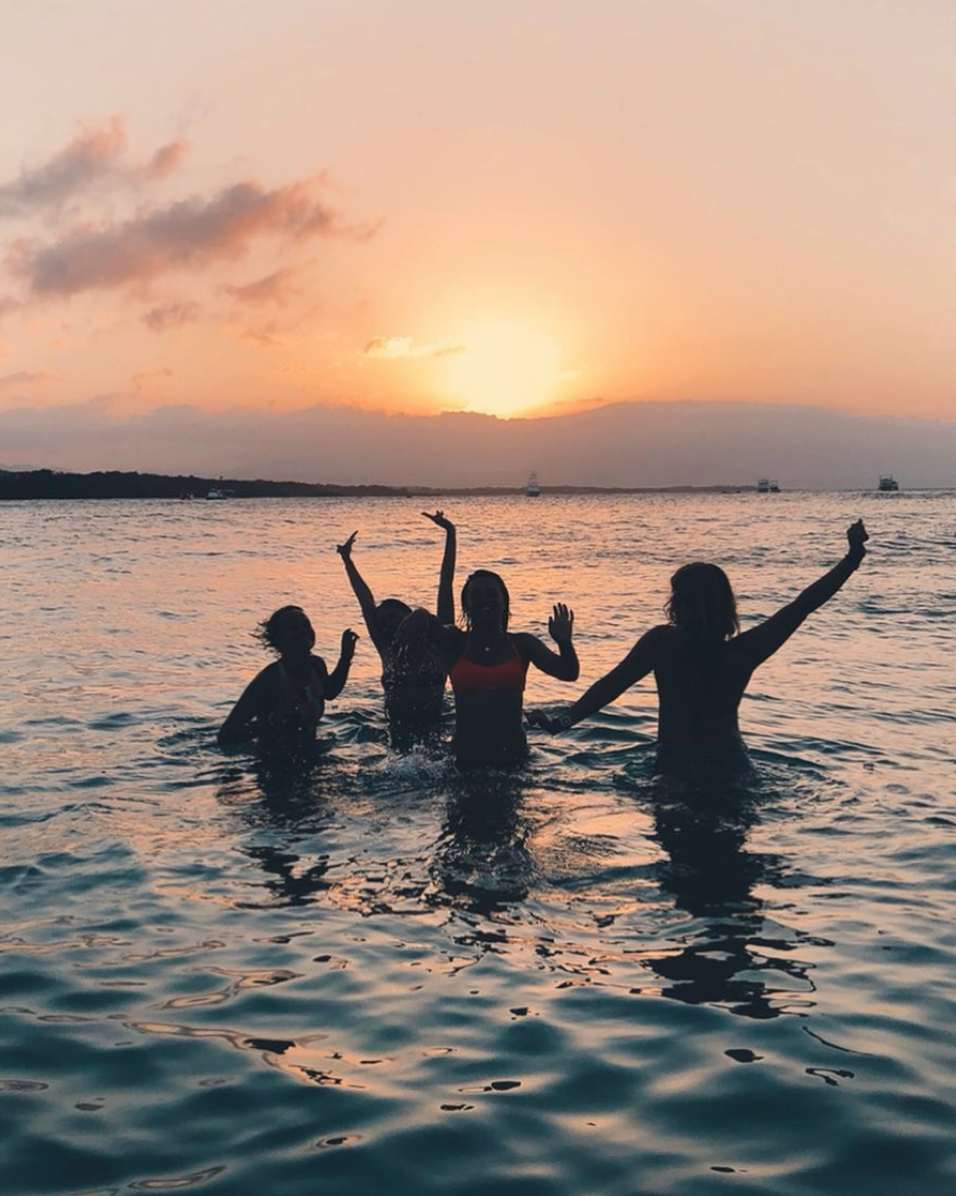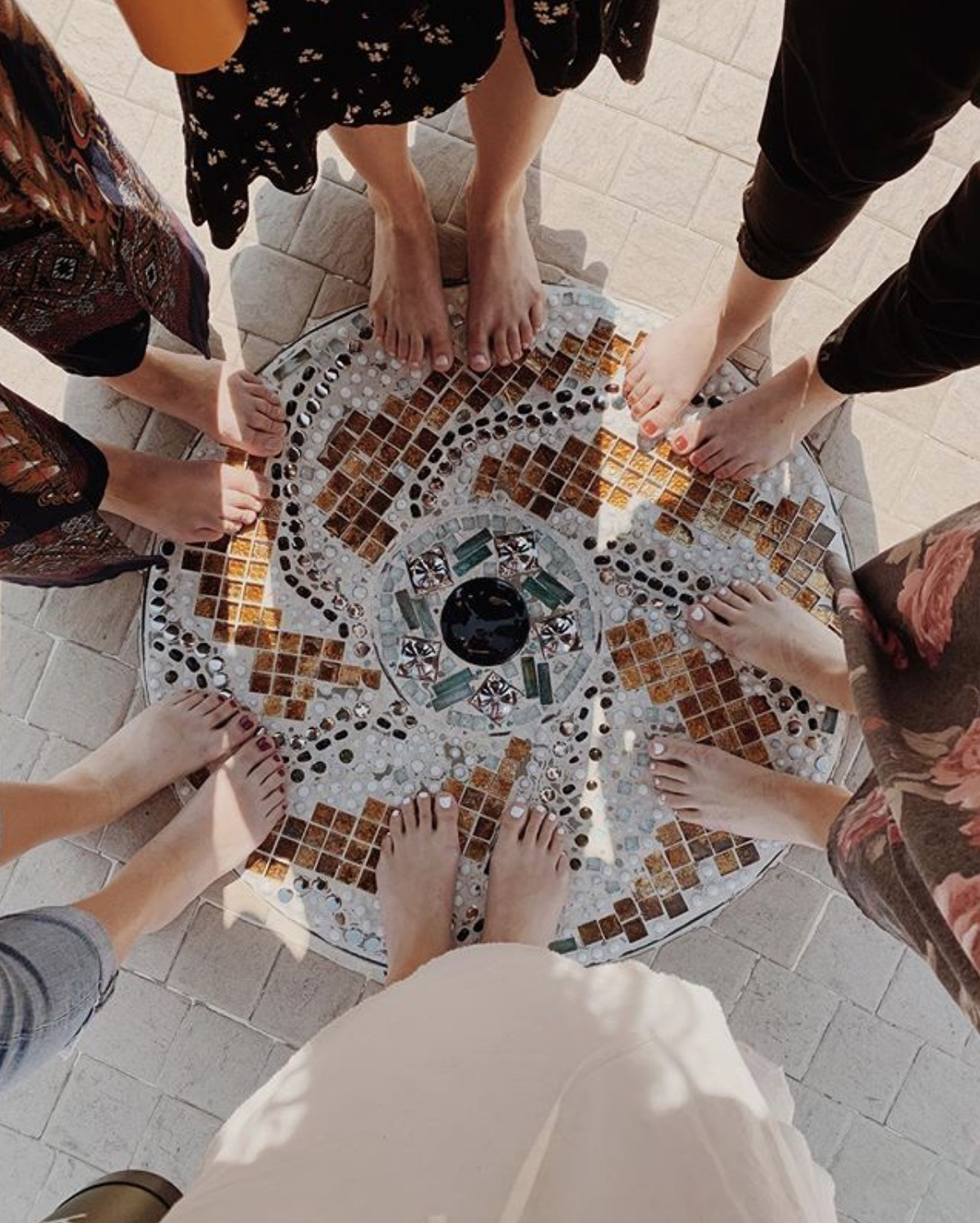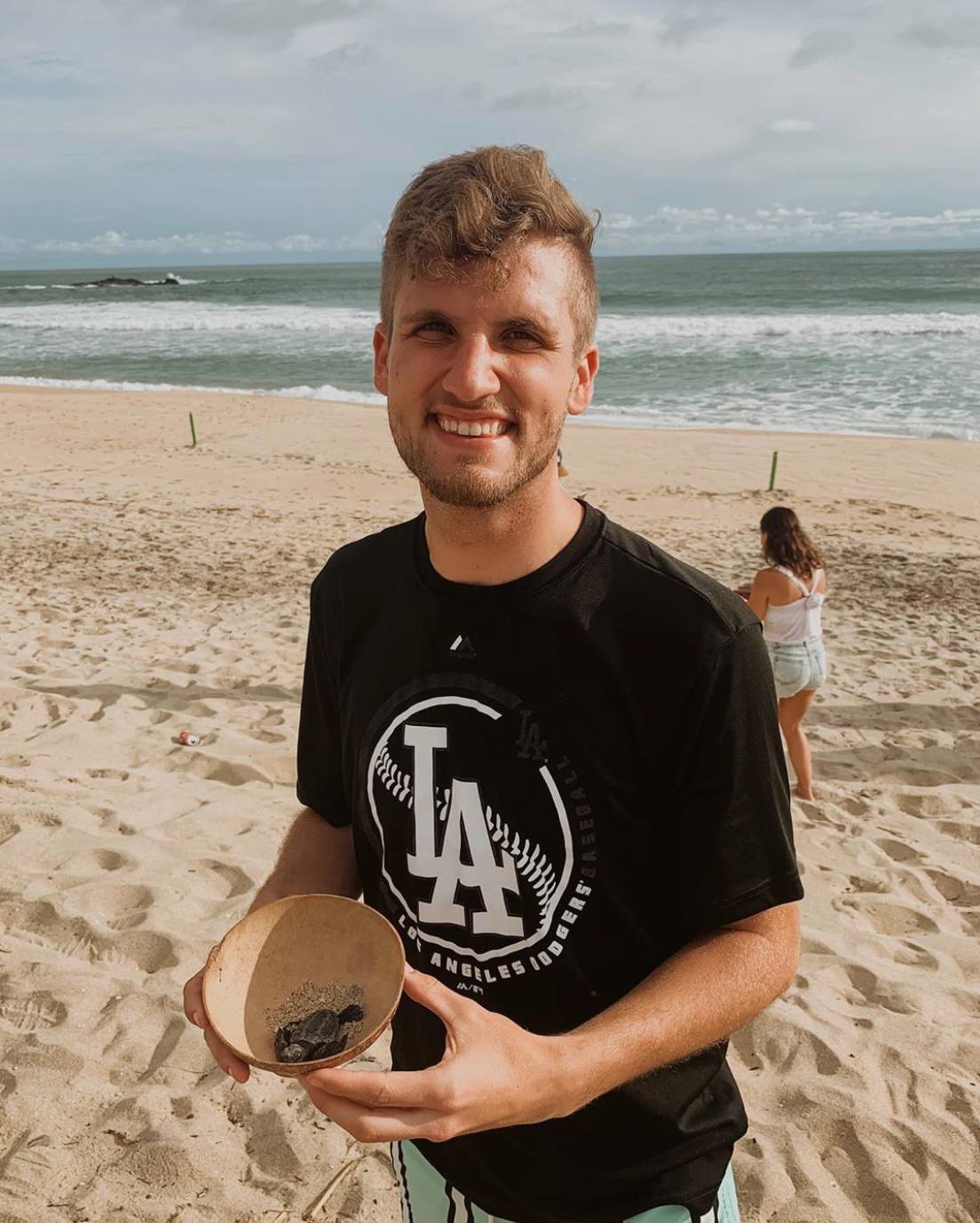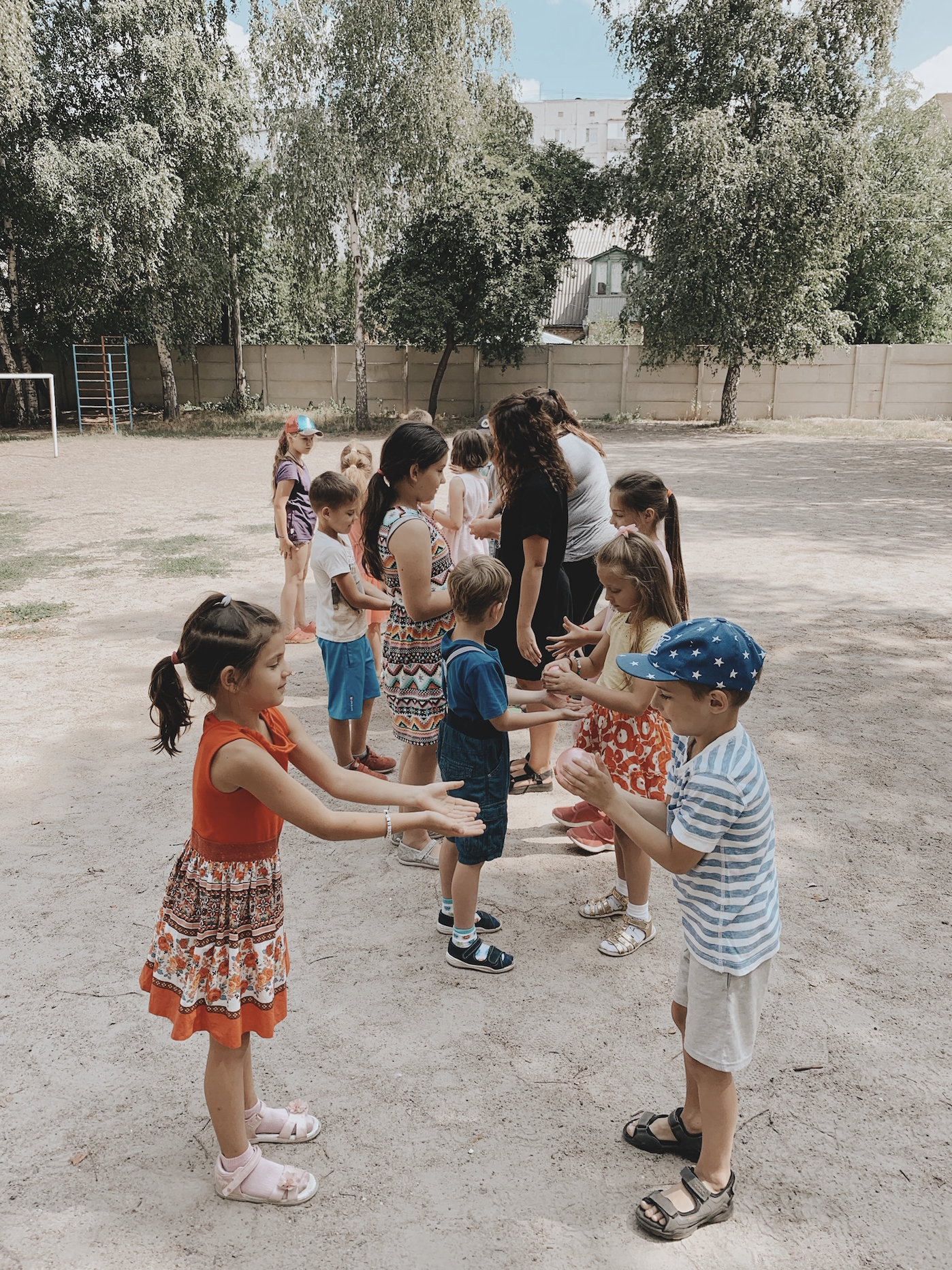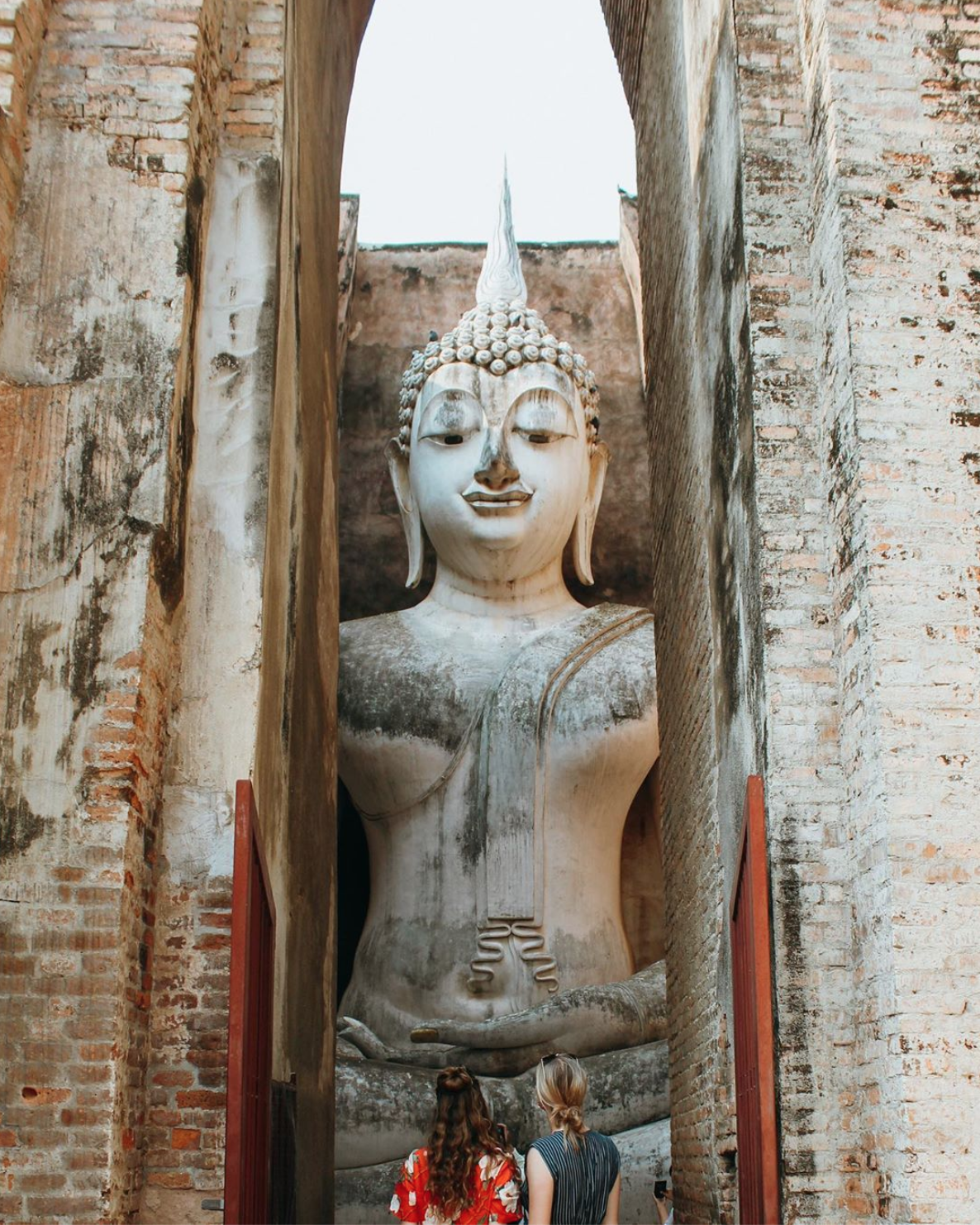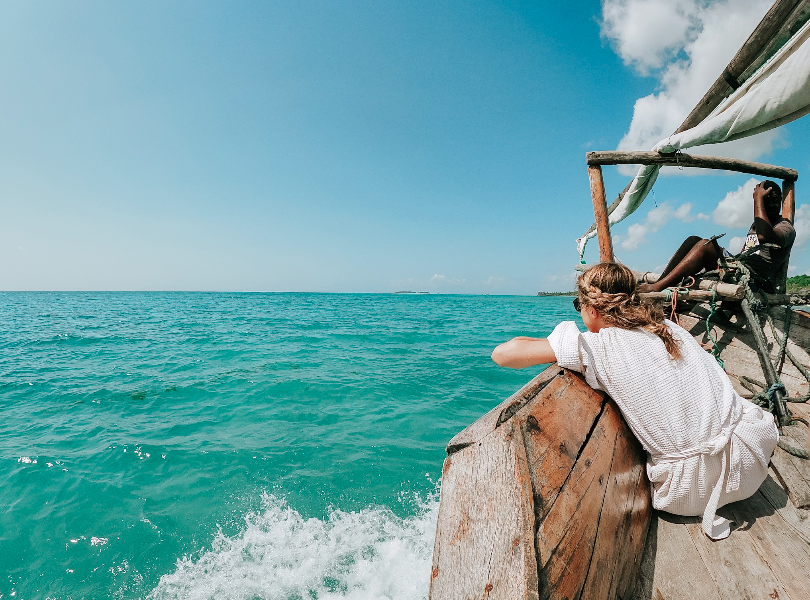
Our newest favorite destination has the prettiest blue water and about a dozen fantastic adventures you have to try.
Get ready to fall in love with Zanzibar. This African island might not be at the top of your travel list but that’s only because you haven’t seen the pictures yet. Our ILP Uganda volunteers love to come vacation in this dreamy spot which is typically full of beach hopping and seeking out ways to swim with wild dolphins.
Africa’s waiting for you!
Volunteering in Uganda
We have a post all about Zanzibar which outlines things like how to get there, info about your visa, some places to stay, and other recommendations, so this post will be strictly about the beaches.
There’s a sharp difference between the beaches in the north and the ones in the south, plus there are a handful of islands you can visit just offshore of Zanzibar. Some are great for snorkeling, others are strictly for the views, and just one is the best place for dolphins. This post maps that all out for you (handy, right?).

The Northern Beaches
Come for: The prettiest beaches, best for swimming, snorkeling, boat trips + more (most of our volunteers say the northern beaches are the best.)
Nungwi
Nungwi’s our #1 pick for a day of swimming and other water adventures. It’s possibly the most famous beach in the island, a pristine stretch of sugar soft sand boasting blue, blue, blue water. One side is lined with busy hostels and resorts, while the other side is quieter — more for those looking to find a secluded spot of sand to relax in. Nungwi’s beaches are quite popular because they don’t suffer from the drastic tides that pull the ocean out a mile or two from shore, meaning you can swim all day here without needing to chase the waves. The coast also sports colorful networks of coral under the waves, making it an ideal spot for snorkeling and diving.
Popular with tourists, you’ll be badgered with tour companies offering half-day or full-day adventures: things like paddle boarding, snorkeling, trips on the gorgeous handmade wooden Dhow boats, and more. If you take a snorkel or diving tour, keep an eye out for schools of striped fish and maybe the odd green turtle.
The area is surrounded by Nungwi village, which is home to restaurants, cafes, and rental shops where you can book a tour or get some gear for the day. Be sure to stop by Mamma Mia for some gelato to eat on the beach.
Caution: In recent semesters, ILP volunteers mentioned that this beach has had an influx of thieves. Don't sacrifice your belongings by getting too distracted by these incredible views and remember to bring your belongings with you if you go into the water. We always recommend our volunteers have a dry bag on hand and never ever leave items on the beach out of reach.

Kendwa
What’s sometimes called Nungwi’s little sister, Kendwa is just south from Nungwi. It has the same pristine sand and water, with little impact from the tides so you can swim all day long. Similar to Nungwi, you’ll find this as one of the best swimming, snorkeling and diving beaches on Zanzibar. In Kendwa, brightly colored starfish are found just off shore — bring your waterproof camera to get pictures of these beauties (but don’t pick them up!).
Kendwa village is a small smattering of resorts and restaurants, with a few vendors offering things like parasailing. Vendors selling fruit, souvenirs, henna, and massages. Vendors typically stick more to Nungwi though.
Kendwa beach is just a 15 minute drive from Nungwi beach.

The Northeastern Beaches
Come for: beaches known for luxury resorts and remote fishing villages. Take note that you will only be able to swim here during high tide.
Kiwengwa
Kiwengwa is the most popular beach on this side of Zanzibar. Come relax on the sand, rent an umbrella, and just say “Hapana” [“no”] if you’re interested in anything the vendors are trying to sell you. The northern part of the island is better for a relaxing day on the beach, but the entire area is very popular. Especially with Italian tourists who stay at the upscale resorts behind the beach. Due to this area being a popular tourist area, you’ll find lots of restaurants, cafes, and cabanas to rent, along with tourist booths selling excursions.
Visitors also mention that you will want to get out of the water when the windsurfers are out (some come inexperienced and the winds can be unpredictable, causing some danger to anyone in the water). You’ll only want to swim at high tide: at low tide, the ocean is pulled back and you’ll have to walk 15-20 minutes down the beach to get to the water (all while avoiding some sea urchins and seaweed).

Matemwe
The small village here is a quiet fishing village, with colonial style buildings hiding fish markets and a few vendors on one side, sprinkled with a few high-rise resorts. The main pull of Matemwe is the seclusion: there are a few boats that will take you to nearby Mnemba island (more on that below, in our guide to the nearby islands), but you’ll find a quieter paradise and not do much else. If you're looking to relax, Matemwe is the spot for you.
Just know that this beach battles the tide — it’s not an ideal swimming beach: low tide pulls the water out from the shore, creating a huge sandy short (a mile out) dotted with sea urchins and seaweed.
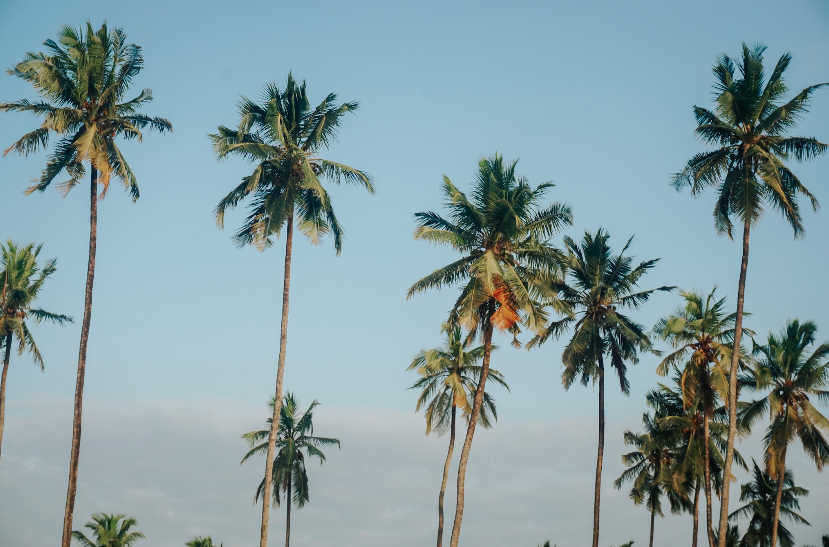
The Eastern Beaches
Come for: the prettiest beaches, snorkeling, boat trips, swimming (depending on the time of day) and some gorgeous views. Some think the eastern beaches are the best on Zanzibar, but only if you stick to the ones including and south of Paje — up by Pongwei and Uroa aren't worth your time (and have had reports of some dangerous activity ... best to skip 'em).
Paje
A total favorite for beach bums. The beach here is full of cafes and restaurants but has a relaxed vibe, bookended by lodges and hostels with some more upscale resorts. Paje has more of a backpacker vibe, with all those postcard views you’re wanting: soft sand, swaying palm trees, and gorgeously clear and blue water. Our volunteers mentioned that it's super pretty and cheaper than Nungwi, but it was a bit more crowded.
Paje is a mecca for expat travelers: come for amazing views, crystal clear water perfect for snorkeling, and some yummy restaurants. Imagine sipping a green smoothie while sitting in a beanbag right on the sand at Mr. Kahawa!
As far as swimming goes, Paje is a fab option if you’re there during high tide (you know the drill, low tide pulls the water out far from the beachfront). Here, low tide does reveal some low water pools across the beach where you may spot some crab or starfish friends.
Jambiani
Some say they can’t relax while frequently being asked if they want to buy some fresh fruit, tours for the day, or jewelry while trying to snooze on the white sands of beaches like Nungwi. Good news, you won’t find that in Jambiani. It’s a chill, relaxed, and quiet fishing village surrounded by one of the stunning beaches Zanzibar is known for. You’ll be able to catch shade in the palm trees rather than paying for an umbrella: this spot is secluded.
A day on Jambiani’s sand means exploring the different sections of the beach (Check out the coral beach!), completely unwinding with a book and a fresh coconut in your hand, and soaking in the baby blue water. You’ll find a few people who can rent out snorkel gear by asking around (the beach is fringed with cool cafes and restaurants, but the place stays quiet). The snorkeling is rather fantastic here.
It’s also quite popular to rent bikes for the day and peddle down the coast. Like other beaches on this side of Zanzibar, it has spectacular swimming, just not at low tide. You’ll also see a more natural beach (some of the busier beaches will have beachcombers to remove all of the seaweed for a pristine look — not the case in Jambiani).


The Southern Beaches
Come for: swimming with dolphins and admiring the classic Zanzibar views (not swimming beaches).
Kizimkazi
This is the “beach” for dolphin spotting tours. During high tide, there isn’t any beach, and low tide means trekking out a mile through the seaweed-strewn sand to even glimpse the ocean. Good thing you don’t head here for the days on the sand ... you’re here in Kizimkazi to come swim with dolphins. You’ll find two types that are very popular in this section of the Indian Ocean, the playful (and more common) bottlenose dolphins and the Indo-Pacific humpback dolphins.
Swimming with wild dolphins is a total adventure — you’ll hop on a boat (through a tour company) and get all geared up with a mask, flippers, and ride along, looking for pods of wild dolphins. Suddenly, someone will shout for you to hop in the water and over the edge you go, straight into the ocean! Underwater, you can see a pod of dolphins swimming all around you (listen closely and you can hear them hum and tweet at each other). Once they quickly swim away, you’ll climb back into the boat and zoom next to the pod and jump back in when you get close enough. It’s exhausting but quite the experience.
Things To Keep In Mind
You’re swimming with wild animals. These animals are not used to human contact and it’s important to listen to any safety briefings given by your tour organizer.
Do not touch the dolphins, though it can be tempting. This activity is best for confident swimmers: it can be unnerving to jump into the choppy ocean and be surrounded by a pod of dolphins who may swim close to you. Animal behavior is always unpredictable and you’ll need to understand the risks before jumping on in.
Book The Right Tour
With any animal experience, research the company you go with for an ethical organization focused on conservation. Some companies (less so in Zanzibar, but still present) “present” the dolphins they find in the wild, but actually keep them enclosed in a section off the shore. You’ll find loads and loads of tours all over the island, even inland in Stone Town. Do your research for a company that aims to provide conservation efforts by respecting their environment and helping you find dolphins who are truly in the wild, undisturbed by tourism as much as possible.
Past ILP volunteers have found tours using websites like booking.com, asking ChatGPT for some reccomendations, booking through their hotel, or by walking the streets of Stone Town and finding local tour companies.
Supposedly, the dolphins are more playful in the morning hours, and some tours start as early as 6:00 AM. It’s best to arrange a tour (that includes transportation) from somewhere like Stone Town or Paje — it just takes too long to get there from somewhere like Nwungi, though it’s an option if the others aren’t.
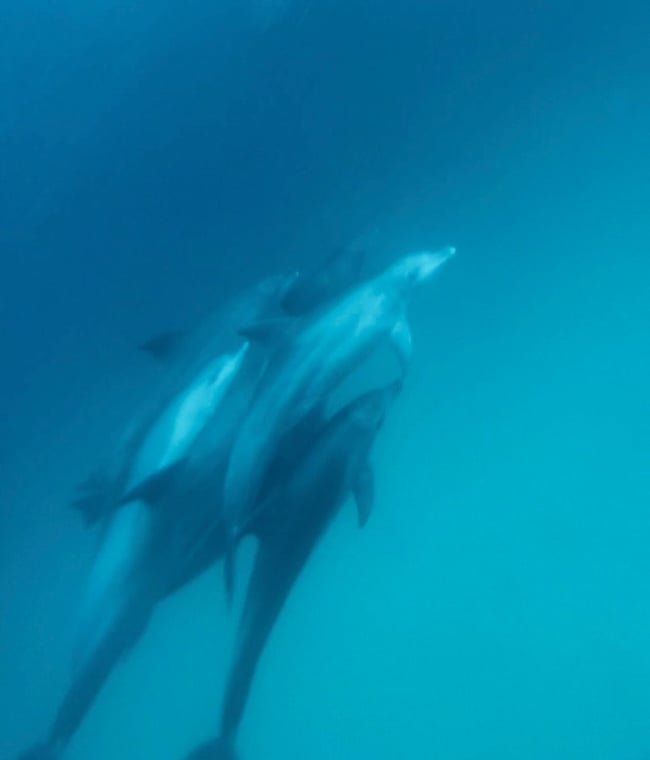

Day Trips To Other Islands
A popular option for snorkel and Dhow boat trips, don’t miss the chance to island hop while you’re in Zanzibar!
Prison Island’s Tortoises
A very popular option from Stone Town, Prison Island is home to about 100 giant (and rare) tortoises, but also has a dark history. Head across the aquamarine water to Changuu Island (also known as Prison Island) and in about 30 minutes you’ll arrive. The island was initially used to house slaves before they shipped off to the Middle East or Europe, then was used to house violent prisoners, then to quarantine those who fell sick from yellow fever or cholera, and then finally became a rehabilitation center for rare and dying species. Despite all of the lore, the tortoises found on this island are the main attractions today.
The Aldabra tortoise is one of the largest species in the world and can weigh over 500 pounds. These guys are massive (and the same ones you can see on the Seychelles … The Seychelles gifted Chenguu Island 4 tortoises in 1919). When you visit, you can pay to enter the island’s rehabilitation center and hang out with these big guys. You’re welcome to feed them and pet them, and take all the pictures you want.
Getting Here: You can book your own boat by heading to the dock outside of Stone Town. There are also lots (and lots) of tour options that will handle everything for you.
The island is also known for spectacular snorkeling when the water is clear (make sure your tour to Changuu Island includes that option if you’re interested).
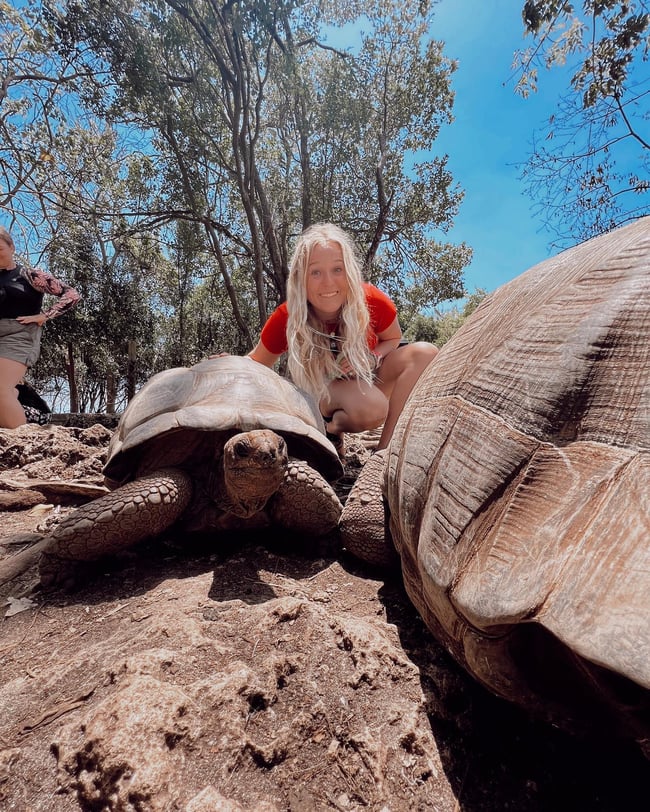
Mnemba Island’s Snorkeling
Just a couple of miles from the northeastern tipped beach Matemwe, Mnemba island is the most popular place to snorkel around. The whole area surrounding the island is a marine conservation area, where you take a boat to a reef, get set up with a snorkel and a mask and float on the clear water: look for shoals of snappers, clownfish hiding in the anemones, blue starfish spread across the earth-toned coral. Since the area is protected, there’s a much higher density of ocean life in this area. If you’re lucky, you may spot a green sea turtle (they come to the beaches to lay their eggs).
Getting Here: This is one of the most popular places to snorkel and can get crowded (but there is plenty of reef for everyone). Booking a tour is very straightforward (you’ll find many options in Stone Town, and vendors walking around Nungwi. Some tours include lunch at Matemwe since stepping foot on Mnemba without a reservation will cost you a hefty dime. Nicknamed “millionaire’s island”, it costs a minimum of $1,000 a night to stay just one day!
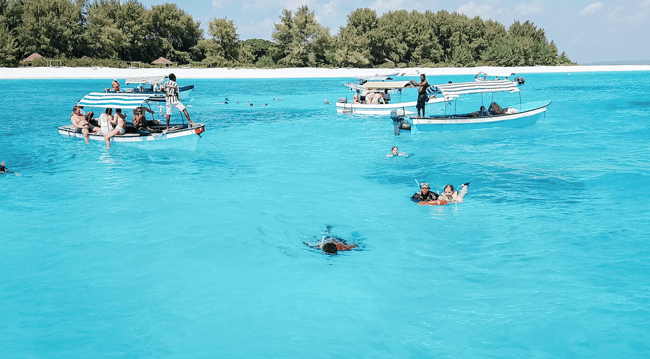
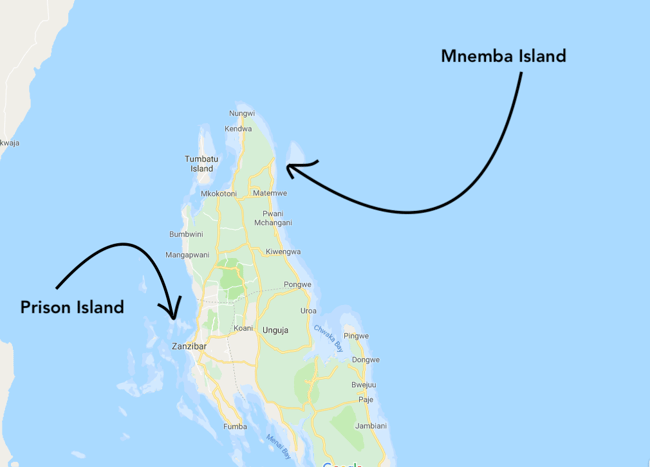
Been ready for a vacation like Zanzibar?
Join our group of volunteers for a semester abroad in Uganda! You'll get the chance to really experience the culture in Uganda, help out in humanitarian efforts, and still have time to book some rad vacations to places like Zanzibar!


